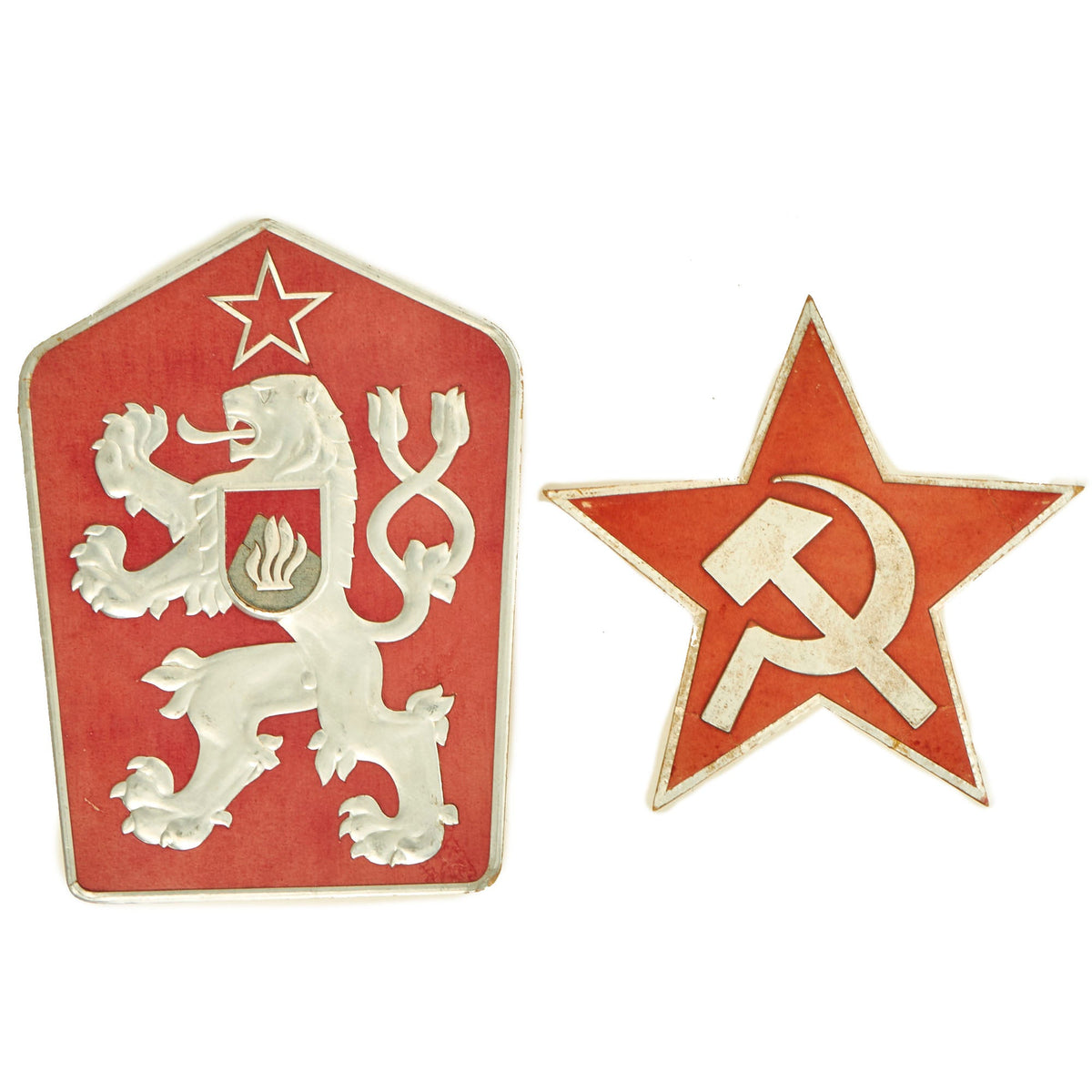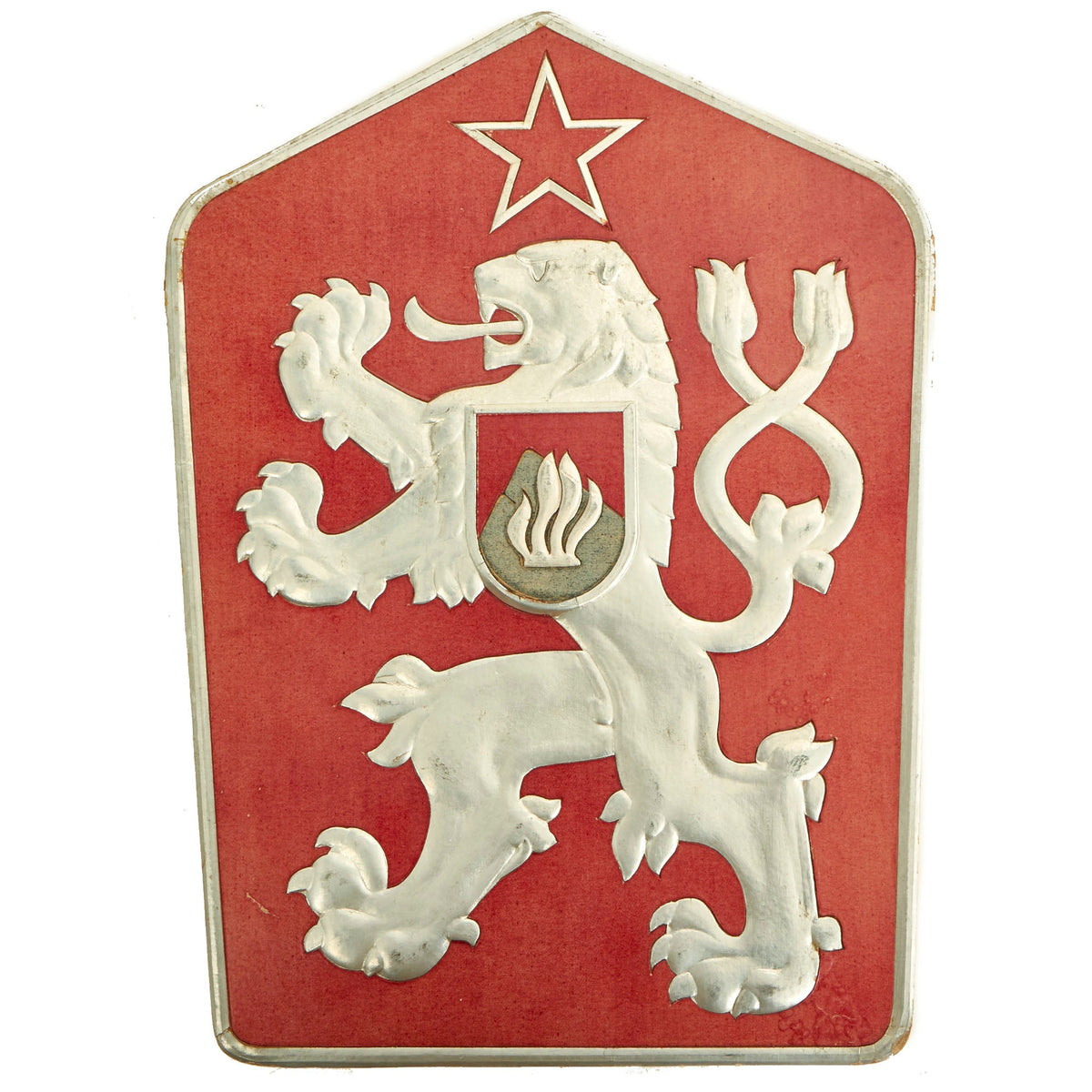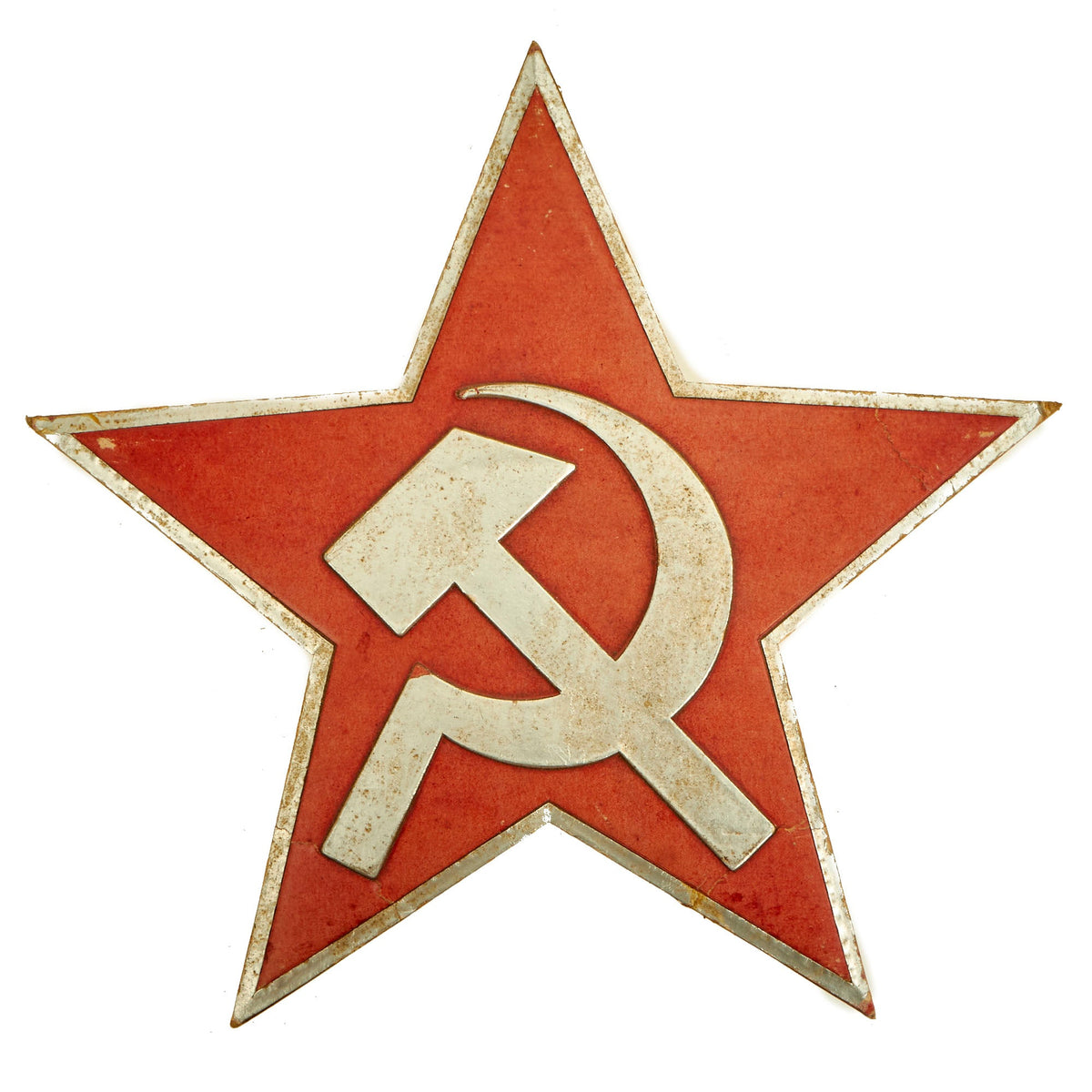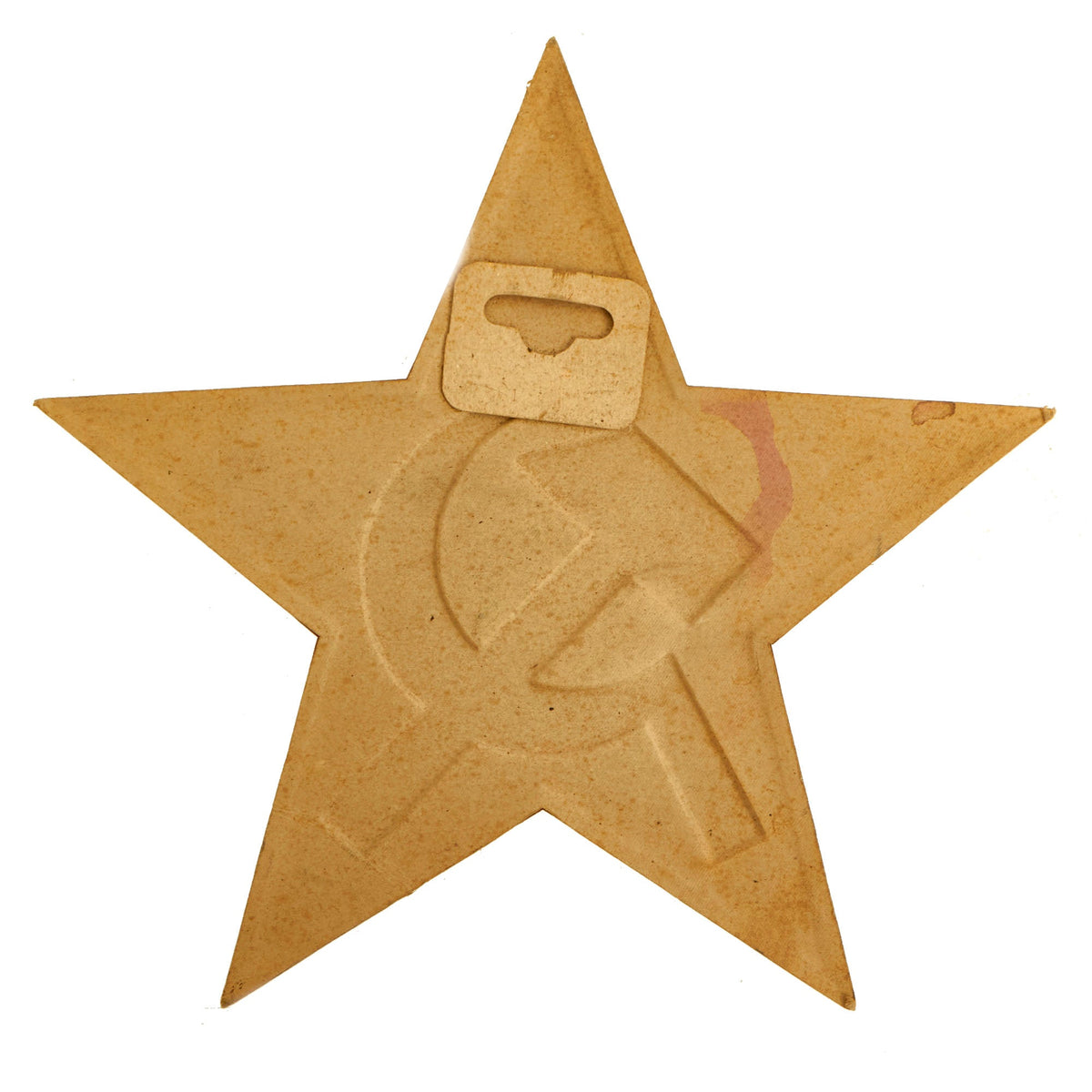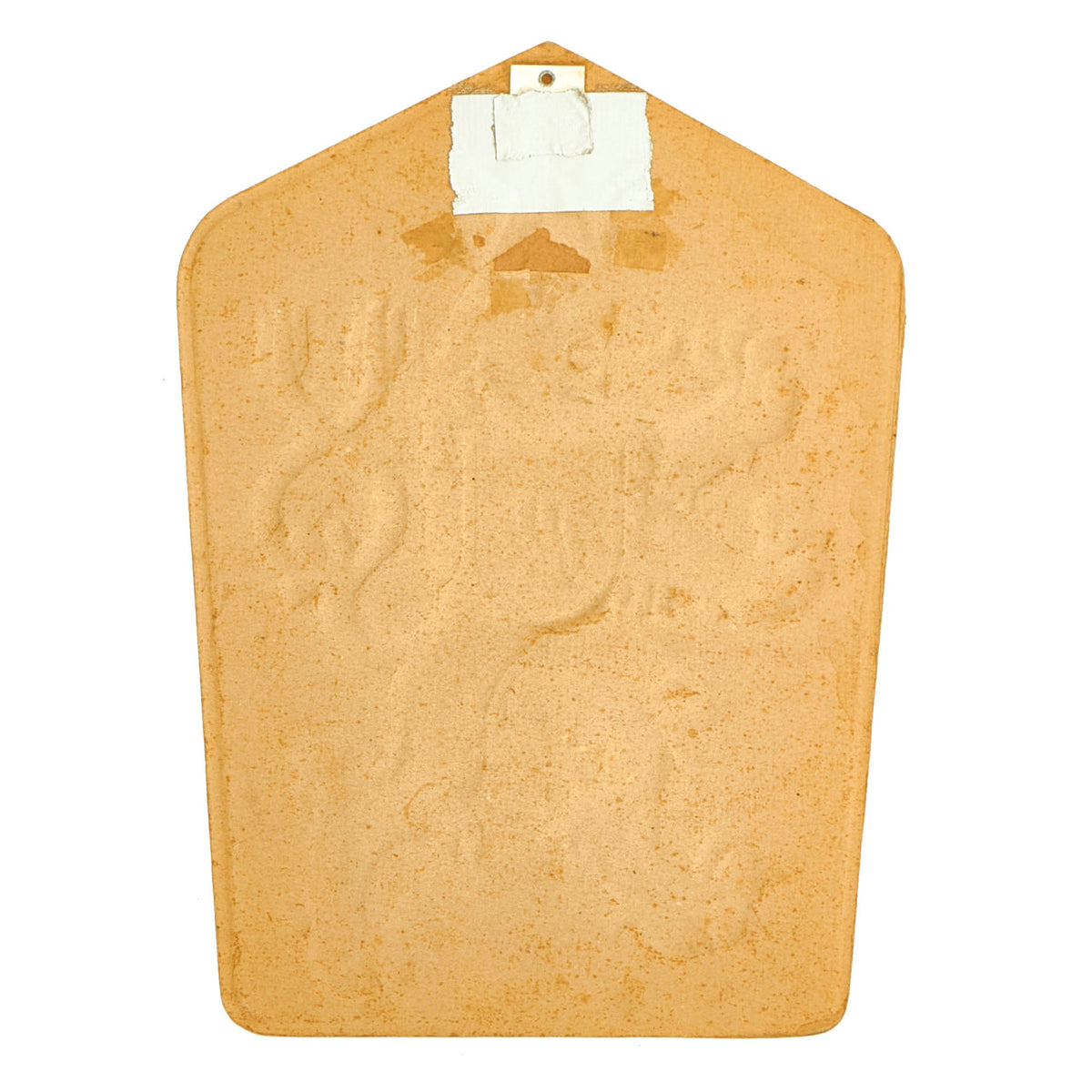Original Cold War Era Czechoslovak Socialist Republic Coat of Arms and Communist Star Cardboard Sign Lot – 2 Items Original Items
$ 195,00 $ 78,00
Original Items: Only One Set of 2 Available. The Czechoslovak Socialist Republic, known from 1948 to 1960 as the Czechoslovak Republic or Fourth Czechoslovak Republic, was the Czechoslovak state from 1948 until 1989, when the country was under communist rule, and was regarded as a satellite state in the Soviet sphere of interest.
Following the coup d’état of February 1948, when the Communist Party of Czechoslovakia seized power with the support of the Soviet Union, the country was declared a socialist republic when the Ninth-of-May Constitution became effective. The traditional name Československá republika (Czechoslovak Republic), along with several other state symbols, were changed on 11 July 1960 following the implementation of the 1960 Constitution of Czechoslovakia as a symbol of the “final victory of socialism” in the country.
In April 1990, shortly after the Velvet Revolution of November 1989, the Czechoslovak Socialist Republic was renamed to the Czech and Slovak Federative Republic. On 27 June 1990, the National Government of Understanding was established by Ladislav Adamec which replaced his own government and was established for the designation of the Czechoslovak Federal Government. It was established in 10 December 1989 and until 1990, the Communist Party of Czechoslovakia was in power of the government and held a large majority until the new elections in February 1990 when the Civic Forum claimed victory and led the government until its end. The government was replaced by the Government of National Sacrifice led by Marián Čalfa.
The Items In This Grouping:
The coat of arms of Czechoslovakia were changed many times during Czechoslovakia’s history, some alongside each other. This reflects the turbulent history of the country and a wish to use appropriate territorial coats of arms.
– 17” x 11 ½” Coat of arms of Czechoslovak Socialist Republic (1960–1990): Czechoslovakia had a Communist regime from 1948, but this initially retained the smaller coat of arms of 1920 and did not adopt an emblem in the form of so-called “socialist heraldry” so popular in most other countries influenced by the Soviet Union. In 1960 however, the arms were redesigned in the form of a pavise, a form of shield seldom used in heraldry, originally intended to stand on the ground and protect foot soldiers rather than the usual knight’s shield. This type of shield was associated with the Hussites in Czech history, whose rebellion was interpreted as proto-communist revolutionary movement by the state-sanctioned Marxist historiography. Above the Bohemian lion, the red star of Communism replaced the crown and the arms of Slovakia, still carried by the lion, was totally remade, removing the cross in favor of the fire of partisans and the trimount was replaced with a naturalistic silhouette of the Kriváň mountain.
This pressed paper/cardboard sign is in great condition but does have fading present and what appears to be a water stain. Given the material in which was used to construct the sign, it’s a miracle it lasted this long intact!
– 13 ½” x 13 ½” Communist Hammer and Sickle Red Star: Communist symbolism represents a variety of themes, including revolution, the proletariat, the peasantry, agriculture, or international solidarity.
Communist states, parties, and movements use these symbols to advance and create solidarity within their cause. These symbols often appear in yellow on a red background. The flag of the Soviet Union incorporated a yellow-outlined red star and a yellow hammer and sickle on red. The flags of Transnistria, Vietnam, China, North Korea, Angola, and Mozambique would all incorporate similar symbolism under communist rule. The hammer and sickle (☭) or sickle and hammer is the principal communist symbol.
The hammer and sickle appears on the flags of most communist parties around the world. Some parties have a modified version of the hammer and sickle as their symbol, most notably the Workers’ Party of Korea which includes a hammer representing industrial workers, a hoe representing agricultural workers, and a brush (traditional writing-implement) representing the intelligentsia.
The hammer stands for the industrial working class and the sickle represents the agricultural workers, therefore together they represent the unity of the two groups.
The hammer and sickle were first used during the 1917 Russian Revolution, but it did not become the official symbol of the Russian Soviet Federative Socialist Republic until 1924. Since the Russian Revolution, the hammer and sickle have come to represent various communist parties and communist states.
The red five-pointed star is a symbol of the ultimate triumph of the ideas of communism on the five (inhabited, excluding Antarctica) continents of the globe. It first appeared as a military symbol in Tsarist Russia. It was then called the “Mars star,” reminiscent of Mars, the ancient Roman god of war. On January 1, 1827, the law was signed that put a five-pointed star on the epaulets of officers and generals. In 1854, the star began to be used on shoulder straps. Later, the five-pointed star with a two-headed eagle inside it was used to mark military trains and carriages. In Soviet Russia, the five-pointed star symbolized the protection of peacetime labor by the Red Army (again, like in Ancient Rome, where Mars was also the protector of the agricultural workers). In 1918, the drawing of the badge for the soldiers of the Red Army in the form of a red star with a golden image of a plough and a hammer in the center was approved. The star symbolized protection, while the plough and the hammer were read as a union of workers and peasants. By the 1920s, the red star began to be used as an official symbol of the state, and finally, in 1924, it became part of the Soviet flag and the official emblem of the Soviet Union.
In the succeeding years, the five-pointed red star came to be considered a symbol of communism as well as of broader socialism in general. It was widely used by anti-fascist resisting parties and underground socialist organizations in Europe leading up to and during World War II. During the war, the red star was prominently used as a symbol of the Red Army troops of the Soviet Union countering the invading forces of NSDAP Germany and wiping them out of Eastern Europe, achieving absolute victory, and ending the war at the Battle of Berlin. Most states in the Eastern Bloc incorporated the red star into state symbols to signify their socialist nature.
Much like the previous sign, this one is in similar condition and defied the odds of survivability from the elements with the material used. All details are still present with faded colors and minimal bending/cracking in the paper.
Both come more than ready to be added to your collections.
Fast Shipping with Professional Packaging
Thanks to our longstanding association with UPS FedEx DHL, and other major international carriers, we are able to provide a range of shipping options. Our warehouse staff is expertly trained and will wrap your products according to our exact and precise specifications. Prior to shipping, your goods will be thoroughly examined and securely secured. We ship to thousands clients each day across multiple countries. This shows how we're dedicated to be the largest retailer on the internet. Warehouses and distribution centres can be located throughout Europe as well as the USA.
Note: Orders with more than one item will be assigned a processing date depending on the item.
Before shipping before shipping, we'll conduct a thorough inspection of the items you have ordered. Today, the majority of orders will be delivered within 48 hours. The delivery time will be between 3-7 days.
Returns
The stock is dynamic and we cannot completely manage it because multiple stakeholders are involved, including our factory and warehouse. So the actual stock may alter at any time. It's possible that you may not receive your order once the order has been made.
Our policy is valid for a period of 30 days. If you don't receive the product within 30 days, we are not able to issue a refund or an exchange.
You can only return an item if it is unused and in the same state as the day you received it. You must have the item in its original packaging.
Related products
Uncategorized
Uncategorized
Uncategorized
Band of Brothers ORIGINAL GERMAN WWII Le. F.H. 18 10.5cm ARTILLERY PIECE Original Items
Uncategorized
Uncategorized
Uncategorized
Uncategorized
Uncategorized
Armoured Fighting Vehicles of the World: AFVs of World War One (Hardcover Book) New Made Items
Uncategorized
Uncategorized
Uncategorized
Uncategorized
Uncategorized
Angolan Rebel 1970s era 60mm Inert Display Mortar from Angolan Civil War Original Items
Uncategorized
Uncategorized
